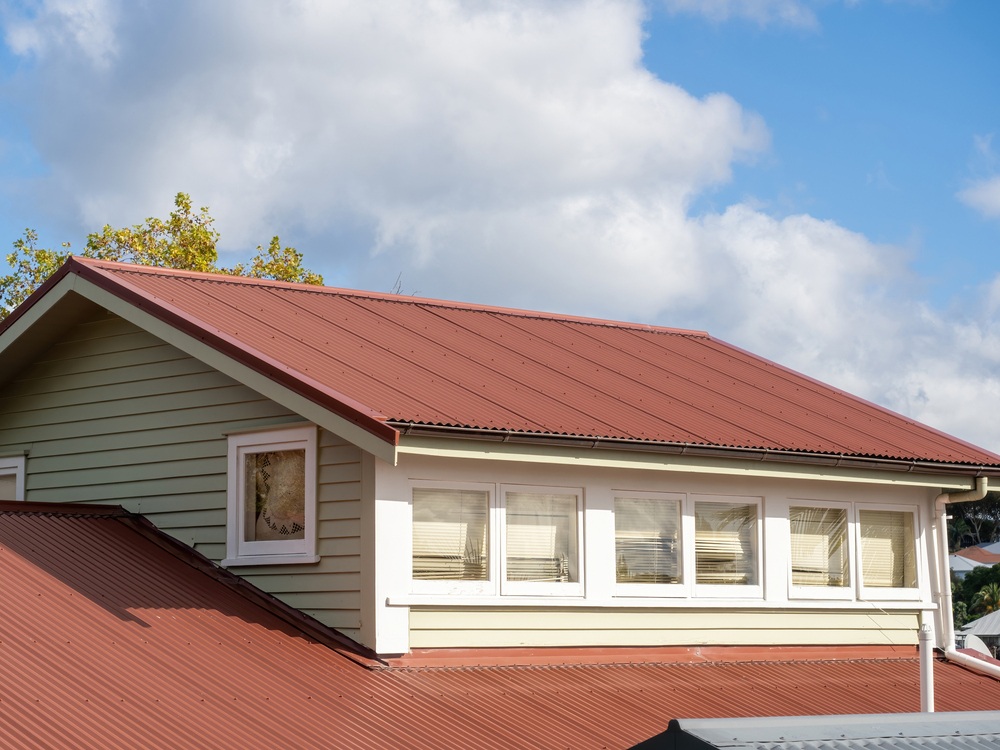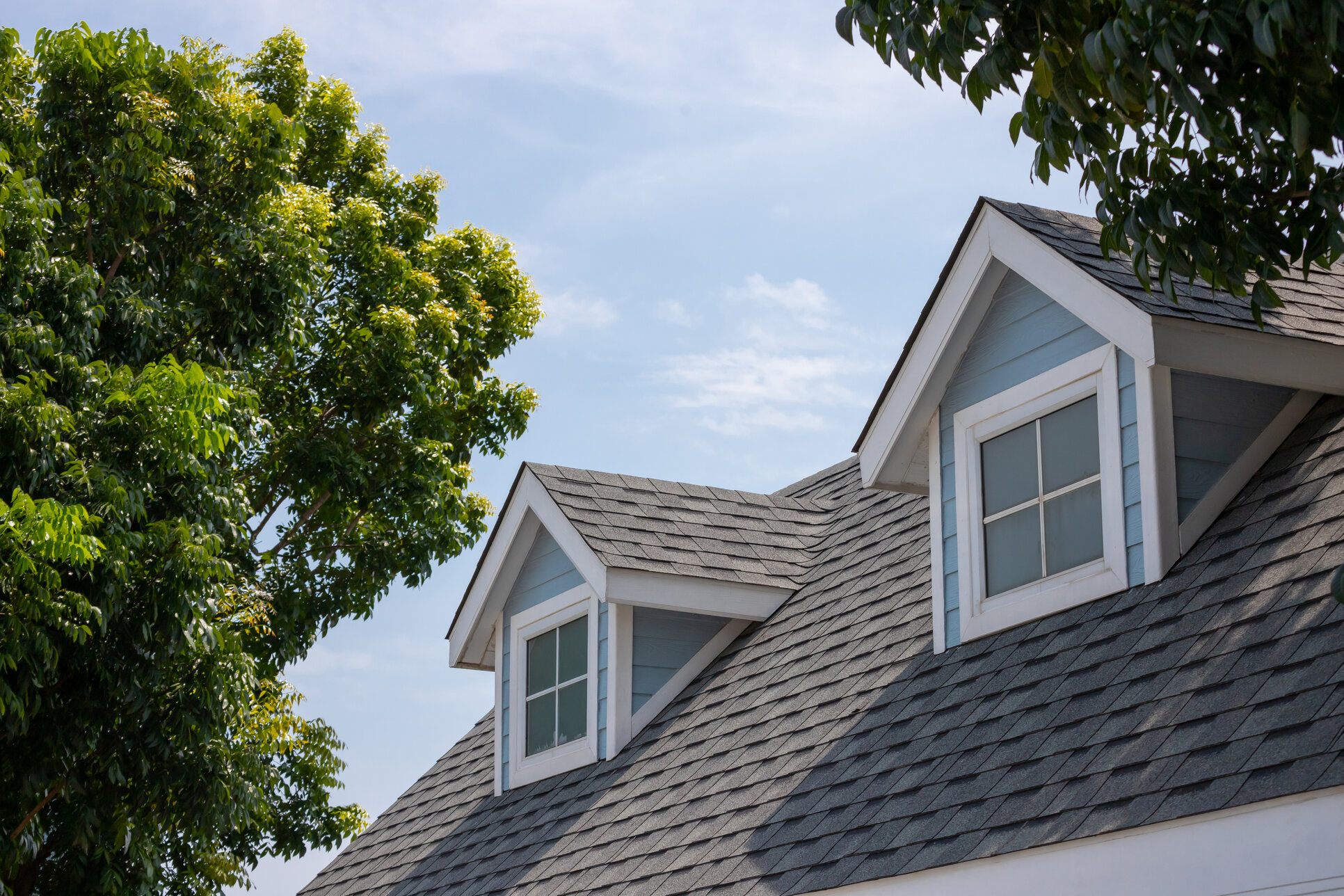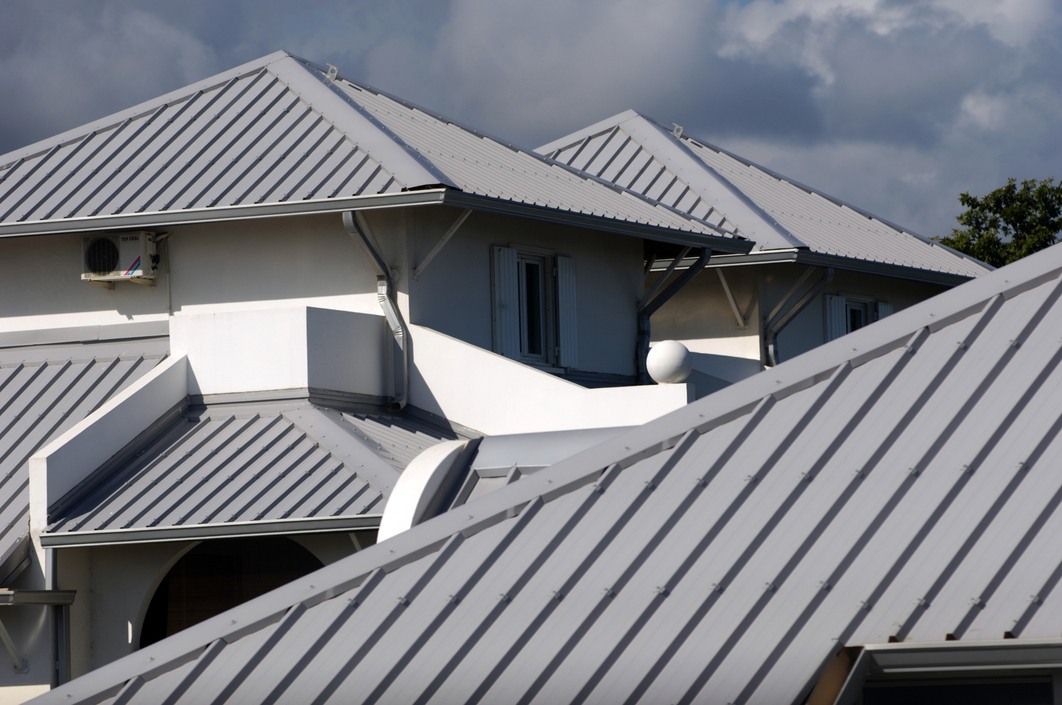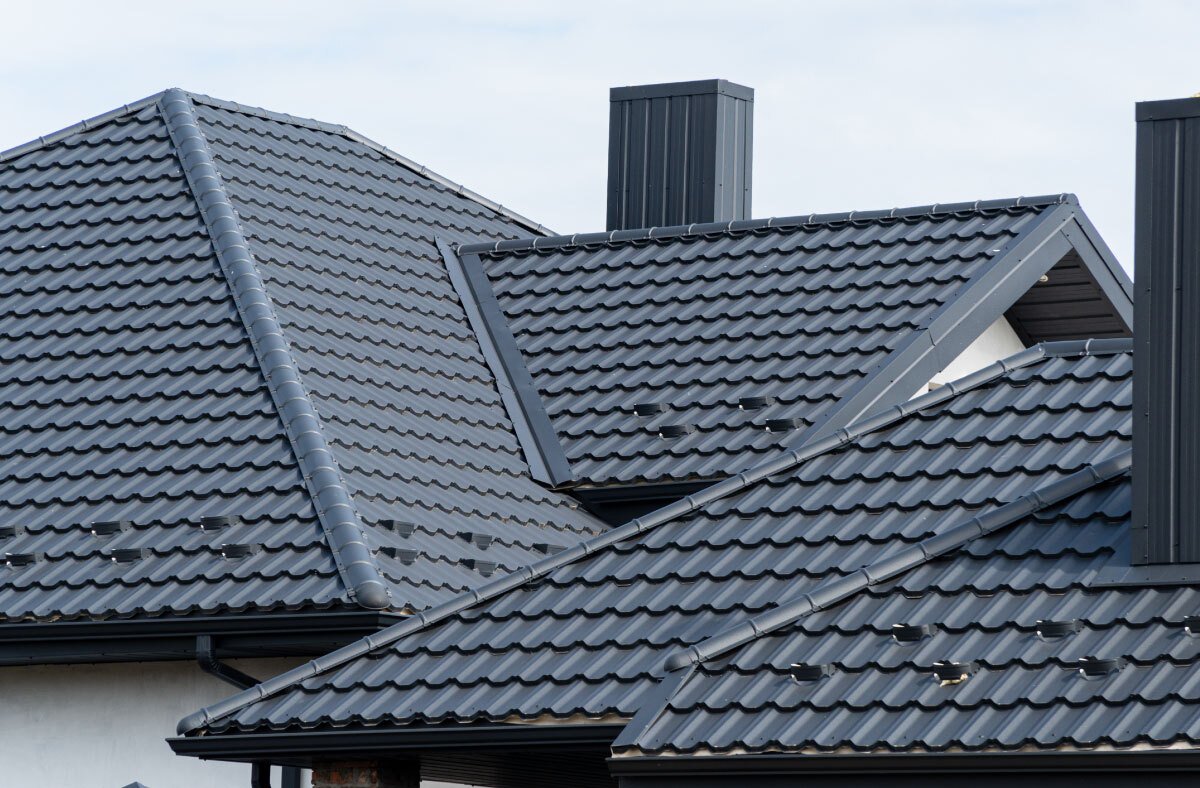Choosing the best roofing materials for disaster-prone states is crucial for protecting your home against extreme weather events. Whether you live in an area susceptible to wildfires, hurricanes, hailstorms, snow, or earthquakes, selecting the right roof can prevent costly damage and improve safety. From fire-resistant roofing for wildfire zones to wind- and hail-resistant shingles for storm-prone regions, this guide explores the top roof types and materials designed to withstand nature’s toughest challenges. By understanding the options available, homeowners can make informed decisions and ensure their roofs provide reliable protection year-round.
In 2024, natural disasters caused over $180 billion in property damage. Besides the high costs, dealing with insurance companies can be challenging and time-consuming when the damage is so widespread, often leaving homeowners waiting long periods for the funds needed to make repairs.
September is National Preparedness Month, a perfect time to consider how you can protect what is likely one of your biggest assets: your home. Investing in exterior materials that can withstand the specific threats in your area is a smart first step. Your roof is the first line of defense against wind, rain, hail, snow, and blown debris, so understanding the best roof type for the potential disasters in your area is crucial for long-term protection.
Summary
Your roof is an expression of your personal style, but it also keeps your home protected from the elements. Choosing the right material is especially important in areas that are at risk of natural disasters. So, what is the best roof for extreme weather? It depends on what disasters are prominent in your area, but generally speaking, metal roofing is one of the most durable and weather-resistant roofing materials available. It is fire-resistant, more wind-resistant than asphalt shingles, and while they can still dent from hail or blown debris, metal roofs will rarely suffer punctures that would lead to water damage inside your home.
Best Roofing Materials for Disaster-Prone States
Roofing Material | Lifespan (years) | Maintenance | Cost | Best For |
Metal shingles | 40 - 100 | Low | Medium | Wildfire, hail, hurricane, high winds, and snow and ice prone zones |
Asphalt shingles | 10 - 20 | Medium | Low | Hurricanes and high winds (Class-F and Class-H) |
Slate tiles | 100 + | Low | High | Wildfire, hail, hurricane, high winds, and snow and ice prone zones |
Composite shingles | 50 + | Low | Medium | Wildfire prone zones |
Clay tiles | 50 - 100 | Medium | Medium | Wildfire, hurricane and high winds prone zones |
Concrete tiles | 50 + | Low | Medium | Wildfire, hail, hurricane, and high winds prone zones |
The best roof type for disaster-prone areas depends on which major weather events pose a risk to your roof. For example, impact-resistant roofing materials like metal roofing and impact-resistant shingles are ideal in areas that see hailstorms, but in an area where wildfires are a risk, those same shingles may not provide Class A fire resistance, and a metal, slate, or clay roof would be a better option.
Let’s break down the best roof types for specific disasters to give you a better idea of what you should consider for your home. Not only will this give you the best chance of protecting your home, but in many cases, having the right roofing materials can help ensure coverage and even lower premiums from your insurance provider.
Fire-Resistant Roofing for Wildfire-Prone Areas
 In areas that are prone to wildfires, you need a roofing material that is either non-combustible or fire-resistant. Ideally, the material should also help insulate the combustible materials underneath.
In areas that are prone to wildfires, you need a roofing material that is either non-combustible or fire-resistant. Ideally, the material should also help insulate the combustible materials underneath.
High-Risk States: California is the state that sees the most wildfire damage, by far, accounting for nearly 70% of all wildfire damage in the country from 2006 through 2025. Texas, Oregon, and Colorado follow far behind, but there were still thousands of properties damaged by wildfires. In these areas, especially, it’s crucial to choose a fireproof roof or at least a fire-resistant roofing material, and in some cases, it’s required by building code.
Top Recommendation: In wildfire-prone states, the most durable choice is a metal or concrete roof, paired with a simple shed or gable shape to minimize debris accumulation. For a more affordable option, opt for Class A asphalt shingles.
Best Fire-Resistant Roofing Materials
The roof should be Class A fire-rated, which is the highest rating for fire-resistance. You have a few options when it comes to the best fireproof roofing materials:
Synthetic roofing materials: Synthetic roofing materials like rubber, synthetic slate, and composite materials like the synthetic cedar shake roofing from CeDUR all often have Class A fire ratings, making them a good option for protection.
Metal roofing: Metal is naturally non-combustible, and the melting point is far higher than the temperatures they’d reach in wildfires. Metal also prevents fire from spreading through the roof to the combustible decking and rafters below, so it’s considered a fireproof roofing material.
Slate roofs: Similarly, slate roofing is non-combustible and Class-A fire-rated. The material won’t melt, and it’s highly insulative, which means it will prevent the heat from wildfires from igniting the building materials below.
Concrete and clay tiles: Concrete and clay tile roofs almost always have Class-A fire ratings. They’re insulative and won’t let flames penetrate down through the roof, and while they can crack in extremely high temperatures, they will hold up in wildfires.
Class-A asphalt shingles: Some companies make asphalt shingles that deliver the required specifications to make them fire-rated roofing. These are good options for homeowners who want or need adequate protection in wildfire-prone areas but still want an affordable roofing material.
Best Roof Shapes for Fire Resistance
The shape of your roof also matters when it comes to fire resistance. The best shape is a simple one with the fewest places for combustible material to accumulate.
Shed-style roofs: Shed-style roofs are technically the best for areas prone to wildfires because they have no areas for flammable tree debris to accumulate, and they have just one end with gutters that can collect debris.
Gable roofs: Gable roofs have no valleys where leaves or pine needles can collect, so the risk of combustible material accumulating is minimal. Simple gable roofs also have just two sides with gutters, and minimizing gutter lengths can also help reduce the risk of fires.
Hip roofs: Hip roofs also have no nooks that accumulate tree debris. They’re slightly worse than gable roofs, though, because they have four sides that need gutters, and gutters can collect combustible tree material.
Roofing Features to Avoid for Better Fire Resistance
Open eaves: Open eaves can allow embers easy access to the underside of your roof, which increases the risk of fire spreading.
Wood roofs: Avoid untreated wood shake roofs, which are highly combustible and can spread fire rapidly. If you really love the look of a wood roof, opt for a fire retardant application on yours, or choose a synthetic wood material, like the roofing from CeDUR.
Best Hail-Resistant Roofing Materials
 Hailstorms expose your roof to impact, and hail can create cracks or pockmarks on certain roofing materials, which then opens you up to roof leaks, expensive water damage, and interior mold growth.
Hailstorms expose your roof to impact, and hail can create cracks or pockmarks on certain roofing materials, which then opens you up to roof leaks, expensive water damage, and interior mold growth.
High-Risk States: Oklahoma, Alabama, Kansas, Mississippi, and Tennessee are the states that are most prone to hailstorms, but even homes in states with infrequent hailstorms can benefit from a more impact-resistant roofing material.
Top Recommendation: In hail-prone states, the best protection comes from Class 4 impact-rated metal or slate roofing, paired with a hip roof design for maximum wind resistance. For homeowners who prefer asphalt, Class 4 impact-resistant shingles offer a more budget-friendly alternative.
Best Hail-Resistant Roofing Materials
Impact-resistant asphalt shingles: Since asphalt shingles are the most common roofing material, manufacturers have found ways to help them withstand natural disasters, including hail. Impact-resistant shingles come in four classes, 1 through 4, with Class 4 being the most resilient. They have a reinforced layer that helps absorb impact and reduce the risk of punctures, cracking, and grit loss.
Metal roofs: Metal roofs are extremely durable, and while they can dent from impact from hail, they’re very unlikely to suffer a puncture. Many metal roofs naturally have a Class 4 impact rating without any special manufacturing.
Slate roofs: Slate is widely considered to be the most durable roofing material, and it’s very unlikely to crack from hail impact. It’s also the longest-lasting roofing material, with a lifespan reaching up to 100 to 200 years.
Concrete tiles: Concrete is a heavy but highly durable material that provides excellent impact resistance. Concrete roof tiles may require structural changes to your home to ensure adequate support, but they often come with a Class 4 impact rating.
Best Roof Shapes for Hail Resistance
Hip roof: The best roof style for areas prone to hailstorms is a hip roof. Technically, the more severe slope on a gable roof increases the chance of a glancing blow from hail rather than a more direct impact, but hip roofs resist wind better due to the lack of gable-end walls, and strong winds often accompany hailstorms.
Gable roof: Gable roofs tend to have steeper slopes that can cause hail to ricochet off without damage. However, they’re more prone to damage from wind during hailstorms since they have large gable-end walls that contend with lateral wind forces.
Roofing Features to Avoid for Better Hail Resistance
While the above materials are ideal for areas with a risk of hailstorms, there are some things you should avoid in roof design and material if hail is an issue in your area:
Asphalt shingles: You should avoid standard asphalt shingles, as a single impact can puncture or crack them and leave you open to water damage.
Clay tiles: Similarly, clay tiles are prone to cracking from impact, and cracked tiles can lead to water damage and expensive repairs.
Certain metal roof types: If you go with a metal roof, avoid aluminum and tin, which are weaker than steel. They’re still unlikely to puncture, but they’re more likely to dent and detract from your home’s curb appeal.
Best Roofs for Hurricanes and High Winds
 Hurricanes, tropical storms, and tornadoes that bring strong winds can wreak havoc on roofs. Wind can blow debris onto your home, which means your roof needs to be able to stand up to impact, but it can also uplift roofing materials, damaging them directly or blowing rain underneath them and exposing your roof decking to the elements.
Hurricanes, tropical storms, and tornadoes that bring strong winds can wreak havoc on roofs. Wind can blow debris onto your home, which means your roof needs to be able to stand up to impact, but it can also uplift roofing materials, damaging them directly or blowing rain underneath them and exposing your roof decking to the elements.
High-Risk States: Florida is the state that’s most affected by hurricanes, with 59 declared hurricane disasters since 1956. Louisiana, North Carolina, Texas, Alabama, Mississippi, Kansas, Oklahoma, Nebraska, and Illinois are all prone to major wind events from hurricanes and tornadoes.
Top Recommendation: For these high-wind areas, the best roofing solution is a metal roof with a hip roof design. Metal roofing offers superior puncture resistance and wind uplift protection, while hip roofs reduce wind pressure on your structure.
Best Hurricane-Proof Roofing Materials
Metal roofing: Metal roofing resists punctures extremely well, so it will stand up better to fallen tree limbs and blown debris than most other materials. Metal roofs that are properly installed also resist uplift better than asphalt shingles and can withstand winds up to 140mph, making them the best option overall.
Asphalt shingles: Asphalt shingles with good wind speed and uplift resistance can be good options in areas prone to hurricanes, tropical storms, and tornadoes. Look for a shingle that has a Class-F rating for fan-induced wind speeds (resists up to 110mph winds) and a Class-H rating for uplift resistance (resists uplift in winds up to 150mph).
Tile roofing: Clay and concrete tile roofs are very heavy and will naturally resist uplift better than lightweight materials. Concrete tiles are a slightly better option because they’re more resistant to cracking from impact.
Slate roofing: Similarly, slate is a heavy material that will resist uplift, and it’s extremely durable and resistant to cracks from impact.
Best Roof Designs for Hurricanes and High Winds
Hip roof: The best roof design for areas that see hurricanes, tropical storms, and tornadoes is a hip roof. These lack tall gable-end walls that will catch lateral winds and put greater pressure on your structure.
Other exposed components: You can also focus on reducing other areas that can catch wind and fail, like ridge caps, flashing, and eaves. Proper installation of all materials combined with a wind-resistant roofing material will reduce your chances of sustaining damage.
Roofing Features to Avoid for Better Hurricane Protection
Asphalt shingles: You should avoid standard asphalt shingles in areas that see strong wind events, as they are lightweight and prone to uplift, and they’re also less durable than most other materials and can easily crack from impact.
Gable roofs: Gable roofs have large gable-end walls that won’t cut wind like a hip roof would, so structural issues are a greater risk.
Best Roof Options for Snow and Ice Protection
 Extreme snowfall and below-freezing temperatures can lead to major roof damage, so homes in areas that see excessive snowfall and long, cold winters need roofing materials that can stand up to both. Heavy snow accumulation can cause structural damage, so a roof material that sheds snow easily is best. Even moderate snowfall that melts and refreezes can cause ice dams, though, and these can cause major roof damage, too.
Extreme snowfall and below-freezing temperatures can lead to major roof damage, so homes in areas that see excessive snowfall and long, cold winters need roofing materials that can stand up to both. Heavy snow accumulation can cause structural damage, so a roof material that sheds snow easily is best. Even moderate snowfall that melts and refreezes can cause ice dams, though, and these can cause major roof damage, too.
High-Risk States: Roof issues related to snow and ice are most common in Vermont, Maine, New Hampshire, Colorado, Alaska, and Michigan.
Top Recommendation: In these snowy regions, metal roofing paired with a steep-pitched gable roof is the best defense. Metal roofs shed snow quickly to reduce load, while steep gable roofs prevent heavy accumulation and ice dams.
Best Roofing Materials for Heavy Snow and Ice Dams
Metal roofing: Metal roofing has a slick surface that readily sheds snow and ice. Metal roofs are ideal in areas that see heavy snowfall, as they’ll reduce the risk of structural damage, and they help prevent ice dams from forming.
Slate roofs: Slate roofs don’t shed snow as easily as metal roofs, but they provide less friction than asphalt shingle grit, so they’re more likely to resist dangerous accumulation. Slate is a heavy material by itself, and many homes will need structural reinforcement to support a slate roof. That added reinforcement also helps resist damage from heavy snow and ice.
Best Roof Design for Snow Load and Ice Dam Prevention
Gable roofs: Gable roofs with steep pitches are the best roof design in snowy areas, as they shed snow more readily and leave you with a lower risk of structural damage.
Slick roofing: Aim to install a low-friction roofing material like metal that can shed snow quickly, especially if you have a steep roof pitch.
Roofing Features That Increase Snow and Ice Damage Risk
Porous roofing materials: Ideally, you want to avoid porous roofing materials, like wood, clay, and concrete, as the materials can crack if moisture soaks in and freezes.
Asphalt shingles: Asphalt shingles aren’t porous, but they’re still not ideal because they’re prone to ice dams and can become brittle in bitter cold.
Flat or low-slope roofs: Additionally, flat or low-slope roofs will promote snow accumulation, which will more readily lead to structural damage.
Best Roofs for Earthquakes
 Roofs don’t need to “stand up” to earthquakes, but the material you choose can affect how well your home as a whole fares during these natural disasters.
Roofs don’t need to “stand up” to earthquakes, but the material you choose can affect how well your home as a whole fares during these natural disasters.
High-Risk States: California, Alaska, Hawaii, Washington, Oregon, and Nevada experience the most frequent and severe earthquake activity in the U.S.
Top Recommendation: In earthquake-prone areas, the ideal roofing solution is a lightweight metal roof combined with a shallow-sloped hip roof design. This combination minimizes weight on the structure while providing added reinforcement to withstand seismic forces.
Best Earthquake-Resistant Roofing Materials and Design
Metal roofing: Metal roofing is, by far, the best option for reducing property damage in earthquake-prone areas. Metal roofing weighs under 1.5 pounds per square foot in most cases and can weigh under 0.5 pounds per square foot.
Shallow roof slope: A shallower roof slope is ideal in areas prone to earthquakes, as steep roofs have larger slopes that require more materials to cover, which means more weight bearing down on your structure.
Hip roof: A hip roof is the best option for homes that will see earthquake activity, as these have added structural components that help reinforce the building, as well as shallower slopes that need less roofing material.
Roofing Features to Avoid in Earthquake-Prone Areas
Heavy roof materials: Asphalt shingles weigh two to three times as much as metal, and materials like clay tile, concrete tile, and slate can surpass 10 pounds per square foot. You should generally avoid these heavier materials, as they only add pressure to already compromised structural components during earthquakes.
Complex roof designs: Simple roof designs are best for earthquake-prone areas, as they have the fewest points of possible failure. Simple gable roofs or hip roofs are ideal.
Choosing the Best Roof for Your Region’s Risks
Generally speaking, a hip roof covered with metal roofing material is the best option for reducing damage from natural disasters, but you should really choose a roof style and material based on the conditions in your specific area. You can use the recommendations above to narrow down your options, but it’s a good idea to speak with a pro roofer in your area to get personalized recommendations, especially since the best material choices can vary based on your existing roof design.
FAQ: Roof Types for Disaster-Prone States
A hip roof is the best roof design for hurricane-prone areas. While these have overhangs that can catch winds, they lack the gable-end walls that a traditional gable roof has, which means less lateral pressure on your home and a lower risk of structural damage. In addition to the roof design, make sure you think carefully about the roofing material you choose. Metal roofs and wind-resistant asphalt shingles are usually the best options.
Wood shake roofs that are untreated pose the greatest fire hazard and are usually not up to code in areas that are prone to wildfires. Metal roofs, slate roofs, and concrete tiles are generally the best options for reducing the risk of a house fire resulting from blown embers, but asphalt shingles with a Class-A fire rating are also good options and will usually meet local building codes in fire-prone areas.
There’s no guarantee that any type of home will survive a Category 5 hurricane, but concrete or steel-frame construction, properly-installed metal, slate, or concrete tile roofing, and a hip roof design will all help. Concrete and steel-frame construction add structural stability and stand up to lateral wind forces better, heavy roofing or roofing with large panels that have numerous fasteners will resist uplift better, and a hip roof has angles on all sides that help cut winds to reduce lateral forces. Homes built to FEMA P-361 or Miami-Dade standards generally have the best chances.
No roofing material is 100% guaranteed to resist a hurricane, but choosing a material with high wind and impact resistance will help. Asphalt shingles with a Class-F fan-speed wind resistance and a Class-H uplift resistance are good options, as are metal roofing and concrete tiles. If you go with asphalt shingles, make sure you pay attention to impact resistance, too, as strong winds can blow debris onto your roof that poses an additional threat.
Lightweight roofing is best in areas that are prone to earthquakes because it puts less strain on your home’s structural components, and metal roofing is the lightest and best option. Metal roofs usually weigh between 0.5 and 1.5 pounds per square foot, which is a fraction of what asphalt shingles, clay and concrete tiles, and slate roofing weigh.
Clay and concrete roof tiles are heavy, which means some homes need structural reinforcement before installation, and they’re also very expensive compared to asphalt shingle roofs. Homes in hotter climates in the U.S., like those in Florida, Arizona, and Southern California, do use clay and concrete roof tiles often, as they help insulate the home and reduce cooling costs.
Metal roofs resist uplift from strong winds better than asphalt shingles, and they’re also less likely to puncture and lead to roof leaks than asphalt shingles, so they’re better options in areas that are prone to hurricanes. Metal roofs usually have the highest wind resistance available for roofing materials and can withstand winds up to 150mph. Metal roofs can dent from impact, but they’re less likely to leak as a result, so they’re also great for standing up to blown debris during hurricanes and tropical storms.
Metal roofing is the best option for heavy rain, as the surface is slick and will shed rain quickly, and it’s also non-porous, so no water will leak through it, even with prolonged exposure. A standing-seam metal roof is ideal, as the fasteners are hidden and are less likely to leak. However, metal roofs can be noisy during rainfall, so you may want to consider adding insulation underneath it to dampen interior noise.
Metal roofing is generally considered the best storm-proof roof, as it’s unlikely to puncture and allow leaks following impact from blown debris or hail, and it resists strong winds very well. Concrete tile is another good option, as it’s heavy and will resist uplift, although it’s more prone to cracking from severe impact, and the porous material can promote minor leaks with prolonged exposure to moisture.
Yes, many different roofing materials can withstand 100mph winds, including asphalt shingles with good wind resistance, most metal roofs, concrete and clay tiles, and slate. If you live in an area that sees intense winds often from hurricanes, tropical storms, or tornadoes, you should make sure you choose a roofing material that suits your local building code and has a high wind rating for fan-induced wind speeds and uplift.
Irena is an industry analyst and financial content specialist at Fixr.com, where she transforms complex data into clear insights to help homeowners make smarter financial decisions. With a background in personal finance research and writing since 2018, she brings years of experience in helping readers understand how to maximize their home investments. Her work has been featured on reputable websites, including Washington Examiner, Yahoo Finance, Fox40, and Forbes.
